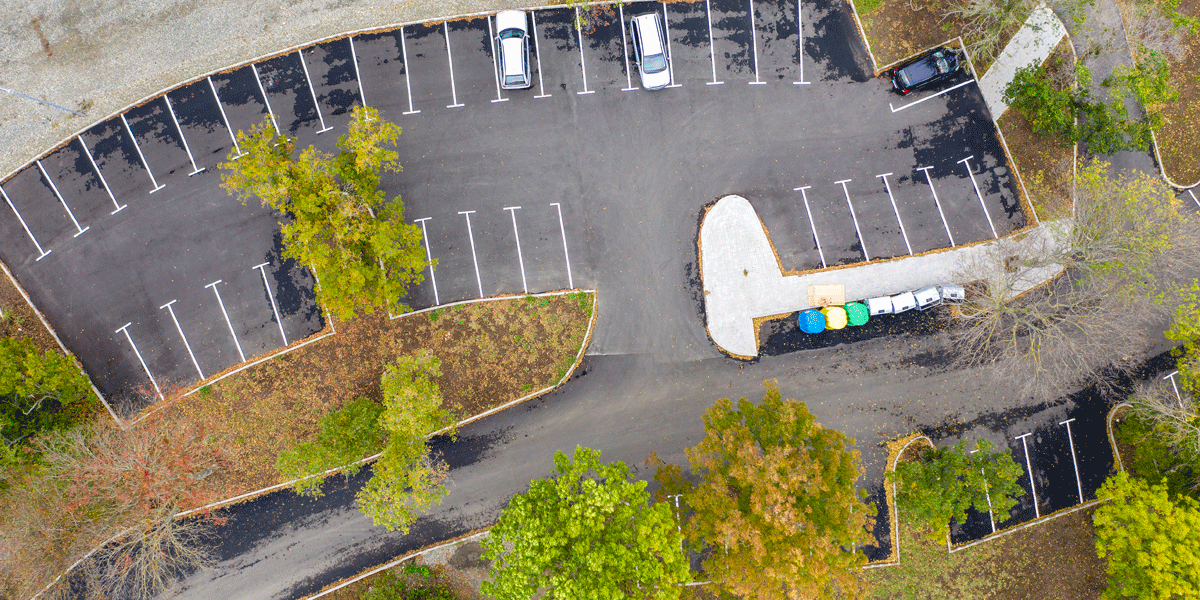Navigating the Truck Parking Shortage: 4 Parking Tips
Tyler started at ATS in 2021 as a driver manager and became a planner in late 2023. He ensures all ATS dry van trucks are set up with freight. He enjoys the logistics that go into the day-to-day operations of the business. He finds it rewarding to watch a load plan or project get carried out with perfect execution. Prior to working at ATS, he was in the Army and was a full-time corrections officer — both of which have helped him in his role today. They reinforced his ability to thoroughly communicate through issues and lay out alternate plans of action under stress. They also taught him how to manage situations under stress, especially when a plan goes south.
With the influx of drivers entering the industry since the freight boom during the height of the pandemic, we’re seeing an increasing issue with parking for truck drivers. This is especially an issue in areas with a lot of freight coming in and out — like the Northeast.
Not only that, but places that once let you park there with no problem — stores with private lots like Target, Walmart and the like — are cracking down on truck drivers parking there due to excess wear and tear and people trashing the lots.
If you don’t plan your parking well in advance — or reserve a spot in some areas of the country — you may very well end up parking on the side of a highway (a huge no-no) or going over your Hours of Service (HOS) trying to find a safe place to park. Neither is an ideal situation.
I’m a driver manager here at Anderson Trucking Service (ATS) and I spend a lot of time trip planning with my drivers to help them maintain success on the road. At least once per week, I have to help a driver find parking because the truck stop they stopped at was full and they have no hours left on their clock.
I never want that to happen to you, and I certainly don’t want you to put yourself, your truck and your trailer at risk by parking on the side of a highway.
In this article, you’ll learn more about the parking issue, the reason it’s become such a prevalent issue as of late, where you shouldn’t park and how you can find safe parking every day.
With these tips, you’ll never have to worry about finding a parking spot again.
The Truck Parking Shortage
Parking has recently become a major issue for drivers as private lots are cracking down on truck drivers parking in their lots. As a privately owned business, they have jurisdiction over who can and can’t park in their lot.
Usually, places like Walmart have a designated section of the lot for truck and trailer parking. Those spots are quickly disappearing, however. This is happening for a few reasons.
For starters, trucks and trailers are heavy — especially when they’re carrying oversized, heavy freight. This weight can do serious damage to the pavement and can cost private companies a lot of money in upkeep.
Secondly, a lot of drivers tend to enter lots through the passenger vehicle exits and entrances. When they do this, it’s easier to hit curbs and poles and damage private property. This also requires the stores to spend more money to fix and maintain their parking lots for their customers.
Additionally, drivers get a bad reputation for leaving trash behind. This certainly isn’t a thing all drivers do — we’ve all seen our fair share of campers and RVs leaving trash behind — but drivers are the ones blamed.
Understandably so, stores don’t want excess garbage in their lots. It not only takes a lot of work to clean up, but it lessens curb appeal and can deter people from shopping there.
These three primary reasons are why stores are hunkering down on truck drivers and not allowing them to park overnight or for extended breaks. More and more, we’re hearing stories of drivers being woken up in the night by cops asking them to move.
If this happens, a few problems result. For starters, drivers in the middle of their 10-hour breaks have to restart their clocks and drive somewhere else. This can cause them to violate their HOS. It can also disrupt the sleep cycle. We all know that lack of sleep can cause major issues on the road.
Additionally, parking on private property could result in a tow or getting a boot put on the truck. Tow and impound fees can easily add up to $1,000 or more — and that’s a bill that no one wants to get.

Places You Shouldn’t Park
Drivers like you shouldn’t park at private lots unless they’re otherwise directed that it’s okay to park there.
Drivers should never park on any sort of on-ramp or off-ramp on the highway or the side of the highway. This is something that ATS and trucking companies alike stress to their drivers day after day.
Parking on the side of the roadway is dangerous. The only reason you should ever be parked there is if you’re broken down and waiting for a tow or someone to service your truck.
It’s easier to get hit in these areas and if you do get hit, you’re 100 percent liable because you shouldn’t have parked there in the first place. Even if the driver was under the influence, you would still be at fault.
4 Parking Tips
A driver’s best bet is to park at a truck stop or a public rest area. Interstates thankfully do have a lot of rest stops, but they can fill up fast.
There are a few ways you can ensure you won’t have to worry about finding parking.
Tip #1: Trip Plan
The first step is to make sure you’re trip planning each day. Find a few different parking options depending on where you plan to end your day. It takes just 10-20 minutes to plan out your stops for the day — including where to get fuel, stop for breaks and park for the night.
Tip #2: Utilize Parking Apps
Next, it’s absolutely crucial that you rely on apps for additional help. I always recommend these five apps to drivers:
These apps, specifically designed for truckers, help mitigate the parking issue because they provide real-time parking updates at nearby truck stops. Many of the drivers in my fleet use these apps to varying degrees and they’ve found success using them.
These tools will help you with trip planning and save you a headache. Not only that, but you won’t have to rely on parking at a private lot and worrying you’ll be woken in the middle of the night by the cops.
Check the apps in the morning and during subsequent stops throughout the day. Most of them provide real-time updates so you can figure out when and where to park. You may need to change your route a bit if one lot is full or stop earlier in the day to get a spot.
Simply looking on Google won’t help you. It may tell you that truck stops with parking are near, but it won’t tell you that there’s parking available. There’s nothing worse than rolling into a lot thinking you’ll have a spot and there isn’t one.
Tip #3: Reserve Parking
In certain parts of the country, a lot of the truck stops have reserved parking. A great example of this is the Northeast. There’s an abundance of freight coming in and out so there’s a lot of truck volume in the area.
It can be an inconvenient expense, but if you don’t reserve a spot, your odds of finding a spot to park are slim to none — especially if you’re stopping later in the afternoon or early evening.
Make a solid trip plan and reserve a spot in these areas. It’ll be a lot less stressful for you, and you’ll have to pay for a spot either way. Spots can range from as affordable as $15 up to $30 or more.
Tip #4: Call Your Driver Manager
If all else fails and you can’t find parking, it’s time to get in touch with your driver manager. If you’re almost out of hours or you can’t find parking anywhere, your driver manager can help you troubleshoot.
Driving over your HOS and receiving a citation isn’t a good idea, but it’s also not a good idea to park on the side of the road all night. It’s a sticky situation, but ultimately you need to get yourself somewhere safe.
In hindsight, it’s a good idea to look at the day, determine what went wrong and try to prevent it from happening again.
Sometimes when it’s getting later in the day, it’s better to call the customer and let them know you can’t make a delivery and just get the truck parked. Your driver manager can help you make that call. They can also help you trip plan to prevent this from happening again.
Navigate All Your Trucking Issues
The truck parking shortage has become a pressing issue, particularly in areas with heavy freight traffic. Private lots once open to truckers are now off-limits due to various concerns such as pavement damage, property accidents and littering. This crackdown has left drivers like you struggling to find safe and legal parking spots, risking penalties or disruptions to their HOS.
Planning ahead, utilizing specialized parking apps, considering reserved parking in high-demand areas and seeking assistance from driver managers are proactive measures to secure reliable parking spots. These steps not only ensure a safe resting place but also prevent unnecessary stress and potential violations.
By adhering to these parking tips and taking proactive measures, you can mitigate the risks associated with the parking shortage. Finding safe spots becomes less of a concern, allowing you to focus on your journey, maintain compliance and prioritize your safety on the road.
For more tips to help you succeed on the road, check out the ATS Learning Center.


